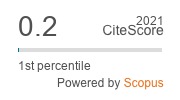A Detailed Assessment of Stock Price Prediction Techniques: Performance and Evaluation
Abstract
The need for a systematic evaluation of diverse stock prediction models is vital for investors & financial institutions aiming to navigate increasingly complex & volatile markets. This paper provides a comprehensive comparative analysis of 20 stock prediction methodologies published over the past seven to eight years, focusing on their strengths, limitations, & potential for future improvement. The techniques examined range from traditional linear models to advanced deep learning architectures like BiLSTM-Transformer & LSTM-DNN, as well as models that integrate sentiment analysis. Although hybrid architectures achieve high predictive accuracy, they often struggle with generalizability across different datasets & market conditions. Models incorporating sentiment analysis show significant promise, yet they frequently fail to evaluate a wide range of sentiment data sources, limiting their robustness. Furthermore, there are gaps in scalability, particularly with Generative Adversarial Networks (GANs), & a lack of computational efficiency assessments in ensemble methods. Results indicate that the BiLSTM-MTRAN-TCN model achieved an R² improvement of 1.5% to 12.4%, & the LSTM-DNN model demonstrated a 98.6% accuracy across 26 datasets, with a Mean Absolute Error (MAE) of 0.0210. These findings highlight the need for more interpretable, scalable, & adaptable models that can accurately predict stock trends across diverse market conditions, contributing to a more resilient financial framework.Downloads
Published
2023-09-12
How to Cite
Ritesh Kumar,. (2023). A Detailed Assessment of Stock Price Prediction Techniques: Performance and Evaluation. Mathematical Statistician and Engineering Applications, 72(2), 468–480. Retrieved from https://www.philstat.org/index.php/MSEA/article/view/2944
Issue
Section
Articles




